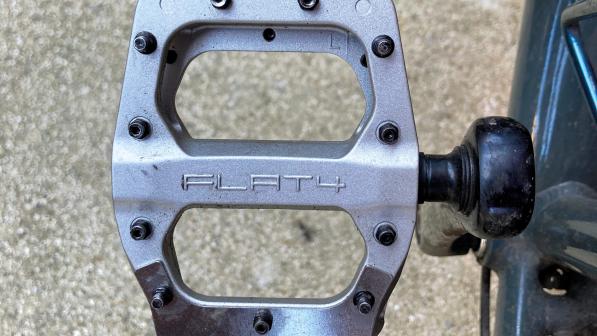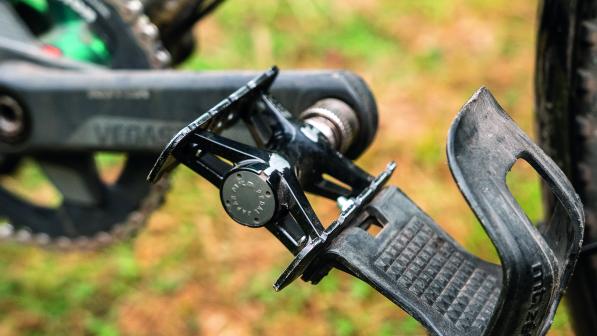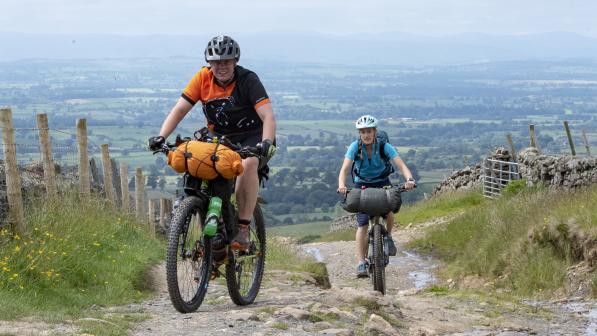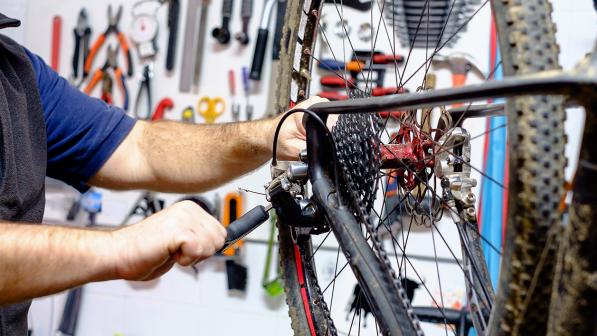Are clipless pedals better than flats?

The efficiency myth
Clipless pedals are said to be more efficient because you can ‘pedal circles’ rather than stamping up and down. It’s persuasive: with your feet locked in, it feels like you’re powering through the whole pedal stroke. The truth is that even pro cyclists don’t pull up on the pedals in any useful way - see our article on pedalling dynamics. They just press harder on the descending pedal and lighter on the rising pedal.
There is evidence that at maximal efforts i.e. sprinting – higher power outputs are possible on clipless. That’s probably due to the more secure footing enabling you to pedal quicker, since power is force times cadence. Being able to apply power to the descending pedal slightly earlier may also be a factor.
Conversely, at very low cadences – i.e. out of the saddle on steep hills – clipless makes it easier to drag the pedals over the ‘dead spot’, where the cranks are approaching vertical. Outside of these scenarios, flat pedals have been proven to be just as efficient.
Clipless systems
An at-a-glance guide to some of the more popular options.
Name
Cleat
Advantages
Crank Bros
2-bolt
Lightweight, sheds mud
Look Keo
3-bolt
Release-tension adjustability
Shimano SPD
2-bolt
Ubiquitous, durable, cheap
Shimano SPD-R
3-bolt
Durable, good foot support
Speedplay
4-bolt
Ergonomic adjustability
Time ATAC
2-bolt
Lots of float, sheds mud
Clipless pros
- You’ll look pro! Don’t underestimate the desire to look like a serious cyclist.
- Your feet won’t slip off the pedals. This is important if you’re sprinting, pedalling at high cadences (on a fixie?), or riding in the rain or mud. But toe-clips and/or straps also do this, and pedals with pins are surprisingly grippy with the right footwear.
- The pedals are usually smaller, so you’re less likely to catch one when cornering.
- Stiff-soled clipless shoes allow efficient power transfer. (But then you only need stiff shoes because your pedals are the size of lollipops! A big stiff pedal is as good as a stiff shoe).
Clipless cons
- You can’t ride your bike in anything but clipless cycling shoes – and compatible ones at that: the cleats and pedals must match. Wrong shoes? No ride.
- For walking, cleated shoes are either adequate (recessed) or terrible (non-recessed).
- You have to unclip and clip in whenever you stop and start. It's a hindrance around town.
- If you fail to get your feet out of the pedals (it’s a right of passage…) you’ll hit the deck, still attached to your bike.
- Your feet are basically locked into one position. (‘Float’ is the ability to move your feet within this limitation.) So each cleat’s fore-aft position and rotational angle has to be right to prevent aches and pains. On flats, you can place your feet however you wish – and adjust this as you ride.
I’m sold: clip me in!
There are two categories of clipless pedal. Those designed for road cycling are single-sided and use a large cleat that sits proud of the sole, attached by (usually) three bolts.
Those designed initially for mountain biking are usually double-sided and use a smaller, recessed cleat attached by two bolts. (Some cycling shoes, like Shimano's RP1, accept both two- and three-bolt cleats.)
Road pedals are really only good for road cycling, while 'mountain bike' pedals also suit commuting, touring, general leisure use, and even road riding.
If you're nervous about going clipless, it’s hard to beat Shimano’s PD-T421 Click’r pedals (RRP £49.99). They're easy to unclip from and double as flat pedals.







